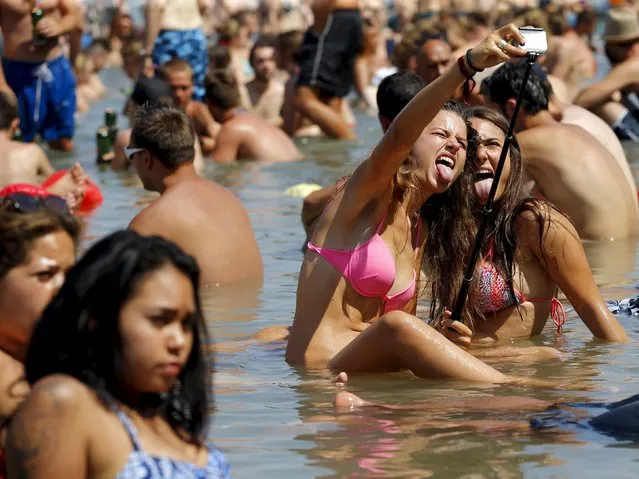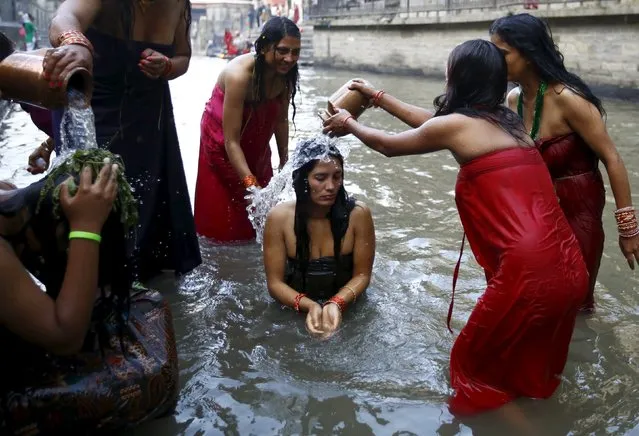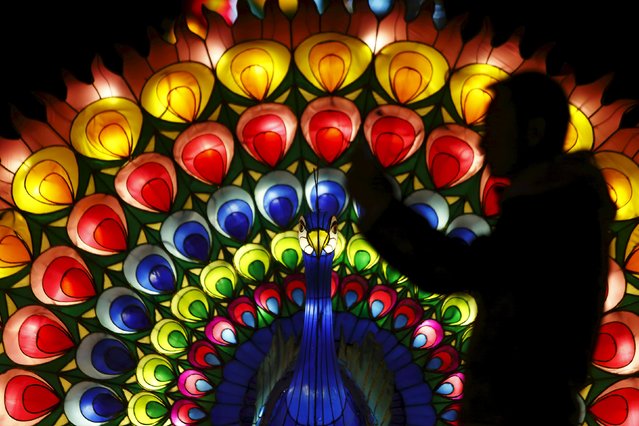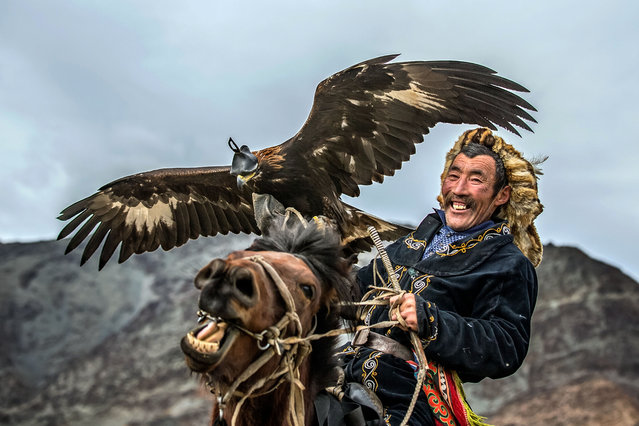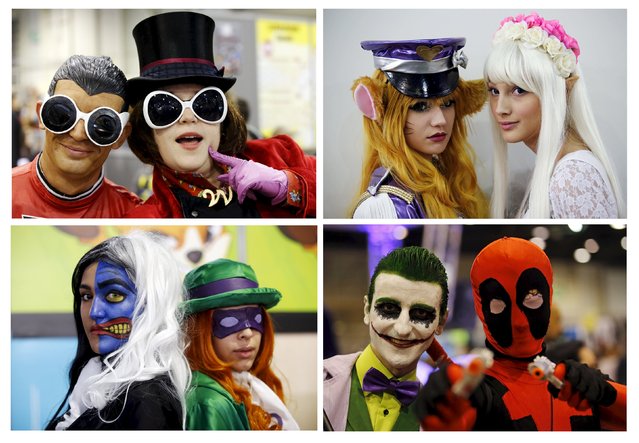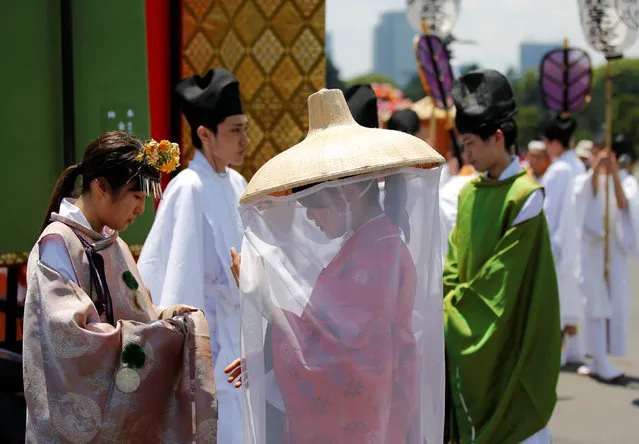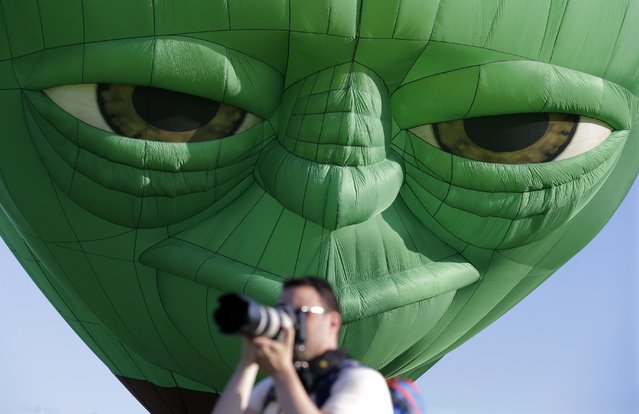
A photographer takes pictures near an inflated Master Yoda character hot air balloon during the 33rd annual QuickChek New Jersey Festival of Ballooning at Solberg Airport Friday, July 24, 2015, in Readington, N.J. The festival which runs through Sunday, July 26, 2015, will feature as many as 100 balloons, including many large, shaped balloons of Darth Vader, an American Flag, a giant whale, a Panda Bear, and a baby dinosaur. (Photo by Mel Evans/AP Photo)
25 Jul 2015 12:36:00,post received
0 comments


